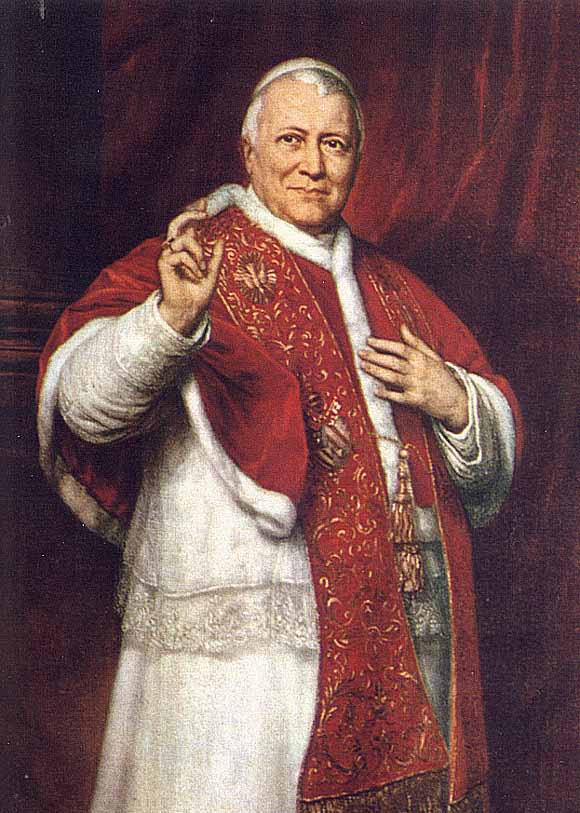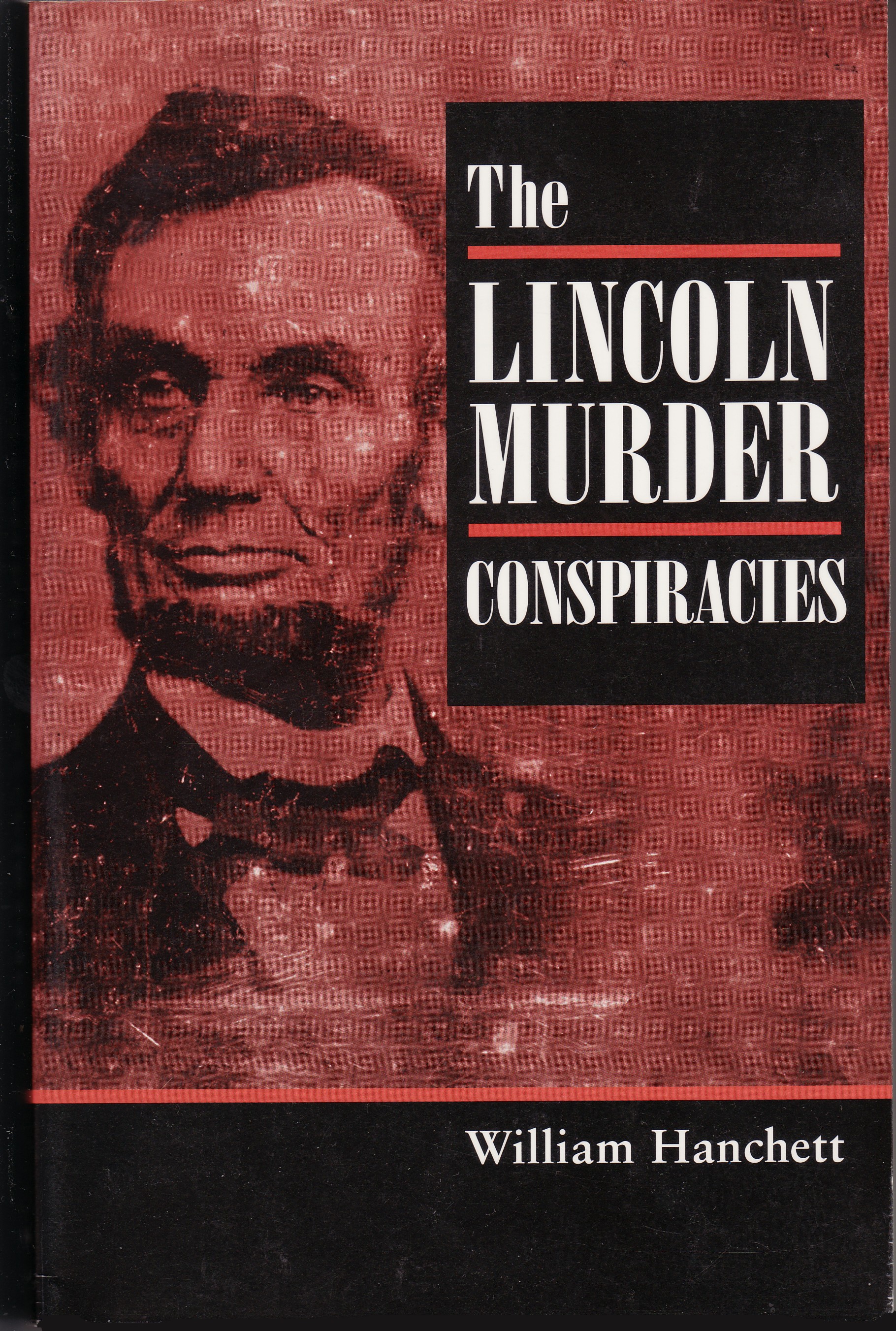Pope Pius IX – The Vatican, Lincoln and the Civil War
Posted By Norman Gasbarro on February 27, 2013
With the recent resignation of Pope Benedict XVI, amid controversy and speculation, another historical time period and another papacy is brought to mind, that of Pope Pius IX, the longest reigning pontiff in the history of the Roman Catholic Church (1846-1878), and the pope who was the contemporary of Abraham Lincoln. Pius IX was the last pope to rule as the sovereign of the Papal States and was caught up in the nationalistic movements taking place in the world, particularly in the unification of Italy, an event that was unfolding at the same time as the American Civil War. Pius IX‘s whole papacy was a balancing act between the trending forces of liberalism vs. conservatism, modernism vs. traditionalism, democracy vs. totalitarianism, and secularism vs. the sacred. His reaction to those forces – the reforms he instituted as well as his failures – are a good subject for study as part of the international dimensions of our own Civil War. Likewise, the growth of the Catholic Church in the United States, as well as the discrimination against it, can be analyzed in the context of his papacy.

Pius IX was born 13 May 1792 in Italy and was chosen as pope on 16 June 1846. His election came amidst the growing nationalistic fervor that was taking place in Europe at the time, and he was seen as a liberal and sympathetic to the causes of the people and the faction of cardinals who wanted reforms in the church. But shortly after his rise to power his Minister of the Interior was assassinated and he was forced to flee Rome for a short time – which led to his increasing skepticism of the liberal and nationalistic movements. In the 1850s and 1860s, the Italian nationalist armies made significant gains against the Papal States, those territories over which the pope was sovereign, finally resulting in 1870 in the seizure of Rome and Pius IX‘s confinement to Vatican City, a small territory within the city of Rome, and the pope’s self-declared epithet, as “the prisoner of the Vatican.”
Despite the fact that he was besieged during his entire papacy, Pius IX is credited with major reforms in the Roman Catholic Church. The doctrine of “papal infallibility,” although an anti-democratic change, came about as a the result of a major democratic reform – the calling of a Vatican Council in 1869. The financing of the Vatican, the Roman Curia, and the works of the Church, was assured through the institution of “Peter’s Pence,” a levy on Catholics throughout the world that replaced the support previously given by the Papal States which were lost in the Italian unification. And, the dogma of the “immaculate conception,” which helped place Mary, the mother of Jesus, in the position of one of the paths to redemption and salvation, was instituted during his papacy. These changes and reforms contributed to the centralization of power in Rome and in the papacy itself – changes that would not face any serious challenges in the years ahead.
The changes were not without controversy, especially in how they were perceived outside the Catholic church, and in particular, in how the papacy was seen in other countries. While the aims of Pope Pius IX were to insure that Catholics could freely practice their religion in any country on earth, he often ran afoul of political realities in places such as Russia and the Ottoman Empire. His fight against anti-Catholic views in Italy, France and Germany, was noteworthy and there is a history of positive relations with some Latin American countries during his reign.
But the educational policies of Pius IX were criticized in that they continued to neglect the natural sciences; primary education was not mandatory in the Papal States and was generally left to the religious orders or to private concerns. He was, however, a patron of the arts (art, architecture, painting, sculpture, the theatre, etc.), and in particular the restoration of churches and the protection of the Colosseum and other Roman relics.
It was in the Americas, and his attempts to meddle in the affairs of Mexico, that caused concern in Washington – and may have been directly responsible for the development of anti-Catholic sentiment in the United States. During the Civil War, the French-supported Maxmillian I, who, with the blessing of Pius IX before he set off for Mexico, attempted to establish a Second Mexican Empire. Lincoln, preoccupied with saving the Union, was unable to help the Mexicans or to stop what was clearly a violation of the Monroe Doctrine – the interference of European powers in the affairs of the Americas. The fact that this intervention was supported by the pope was known at the time, and after the Civil War, the United States supported the Mexicans and Maxmillian I was overthrown. Part of this story was told in an earlier blog post entitled, Cinco de Mayo, the Confederacy and Gen. Jo Shelby. The connection of the papacy with the Confederacy was also not lost on Americans. Pope Pius IX was the only foreign ruler who gave any level of diplomatic recognition to the Rebel government. A conspiracy theory also emerged in the years after Lincoln’s death, that Pope Pius IX was somehow involved in the assassination – in directing it or assisting in it – and was fueled by a number of factors, not the least of which were that Mary Surratt, the convicted conspirator who was hanged, and her son John Surratt, who was wanted as a conspirator but fled to the protection of the Vatican, were both Catholics.
One of the difficulties in researching and writing on the subject of this blog post – “the Vatican, Lincoln and the Civil War” – is the lack of primary resources. Much of what is done in the Vatican is and was in secret and the hope of ever having any of those documents come into light (it they even exist) is very remote. Thus, any historical treatise that is produced will be incomplete and based mostly on speculation – or on what is openly known and found in official, public pronouncements. Writing on this subject could also brand the writer as an publicist for the church if he/she ignores obvious paths of inquiry – or as anti-Catholic if too hard on the church and the pope.
Three resources are presented below, each of which looks at some aspect of “the Vatican, Lincoln and the Civil War.” All three are readily available and each is not without its own controversies (which will not be discussed at this time).
Charles Paschal Telesphone Chiniquy, Fifty Years in the Church of Rome. This book, by a former priest, is available as a free download (click on title) from Google Books. The last section of this book deals with Chiniquy’s relationship with Abraham Lincoln.
Emmett McLoughlin, An Inquiry Into the Assassination of Abraham Lincoln. Also by a former priest, this out-of-print book is currently available from used book sellers such as Amazon.com.
William Hanchett, The Lincoln Murder Conspiracies. Chapter 8, entitled “Reductio ad Absurdum,” looks at both the views of Chiniquy and of McLoughlin. The book is available, new and used, from booksellers such as Amazon.com.
——————————
Readers are invited to suggest other books and articles which discuss the relationship between the Vatican, Lincoln and the Civil War.
 ;
;





I’m currently writing an historical fiction novel taking place in the U.S., Mexico and Europe between the years 1830-1874. At one point in my story, the Vatican’s part in the assassination and the different factions within the Jesuits crops up. Why for example are the Jesuits required to take an additional vow upon becoming priests not required of the secular and other orders? That vow is “obedience to the Pope.”
By the way, I hold degrees from the University of San Francisco (a Jesuit institution) in English, Spanish, history, philosophy and theology. While in college, my work-study scholarship found me in charge of the key to all books locked in the “M Case” room. I never discovered what the “M” stood for. However, the reason I got the key was because the then Dean of Students (a friend of my father’s), learned my father had failed to censor my reading materials when in high school and grammar school. As I had already read all the works of Victor Hugo, Alexander Dumas and several others on the censored list, the Dean decided I was already corrupted. Hence, I got the key and access to many more censored books.
The thought of being given unrestricted access to Vatican archives is a dream causing my brain to salivate for the hidden knowledge within.